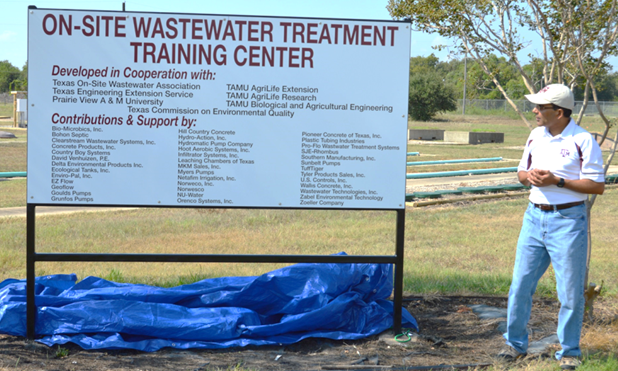Who We Are
The Sustainable Integrated Water Infrastructure (SiWi) is a Texas A&M University project designed to research, demonstrate, and increase awareness about water reuse. Our team is devoted to developing innovative and affordable solutions for sustainable water and wastewater treatment; onsite or localized reuse and recycling techniques; a statewide extension and research program related to surface and groundwater quality protection; and addressing other emerging water and environmental issues.
Opportunities and Challenges to Water Reuse
Water plays such a vital role in our everyday life that we cannot afford to ignore our nations’ aging water infrastructure, changing sources, status quo operations, complex sociological issues, and their interactions that affect how we do water in the 21st century. One of the biggest limitations of our current water infrastructure is its design that allows us to use the highly purified water only once before returning it back to the nature for future reuse.
Population growth resulting in increased demand for water and changing weather pattern resulting in extreme drought and flooding conditions are stressing our nation’s aging water infrastructure. It is prime time for water professionals to rethink the fundamentals of water infrastructure design such that the 21st century water infrastructure can withstand both the pressures from growing demand and changing climate.
Two fundamental shifts are happening in water industry albeit slowly but steadily that should be encouraging to the society: first is to consider “One Water” infrastructure instead of fragmented waters such as drinking water, waste water, and storm water; and second is to integrate “reuse” of once used or unwanted water (aka waste water or storm water) in the water infrastructure. The era of using highly purified drinking water only once is over, we just can’t afford to discharge adequately treated wastewater into rivers or groundwater anymore because of the time and unpredictable path nature takes to return that water back to our source water supplies.
Advances in water treatment science and technologies made in the 20th century allow us to refurbish existing and build new water infrastructure to use once captured water at least four or more times; and after that return a small amount of absolutely unusable water back to a controlled environment that is hydrologically not too far from our source water supplies. Reuse of water both at large municipal scale and small individual dwelling scale has been successfully demonstrated at various locations, however full-scale integration of reusing water onsite in an existing water infrastructure is still only a concept.
Our Vision: SiWi
In order to reduce the gap between perfected water supply and the public’s demand, people must:
- Integrate effective and localized reuse concepts into existing water infrastructure;
- Promote sustainable infrastructure that meets society’s current and future water demand; and
- Ensure safe sanitation to protect public health andenvironmental quality.
REFERENCES:
List of presentations

